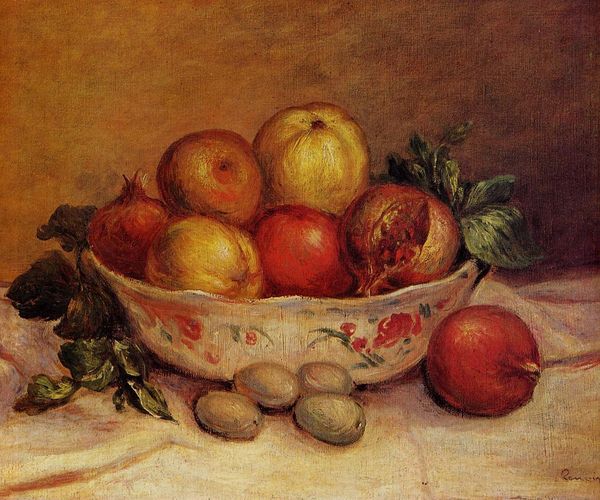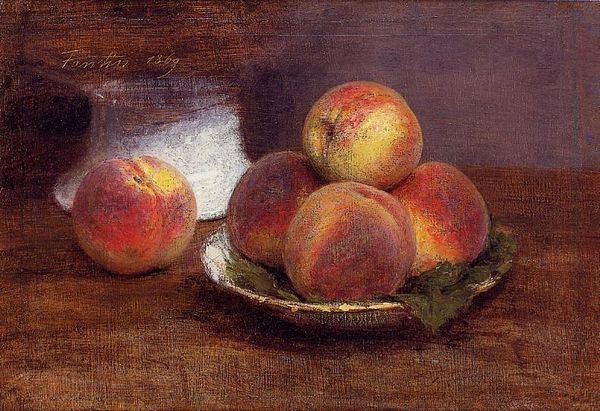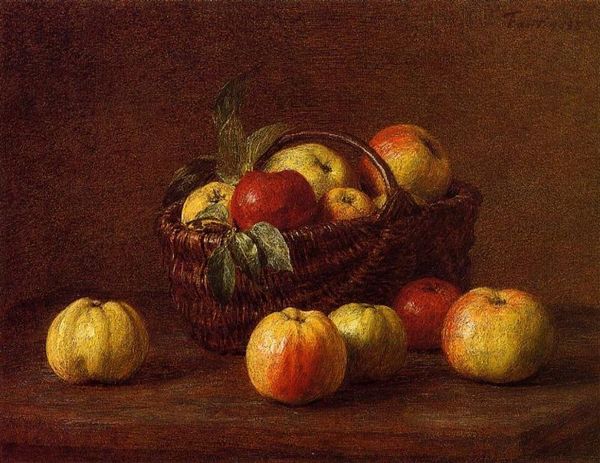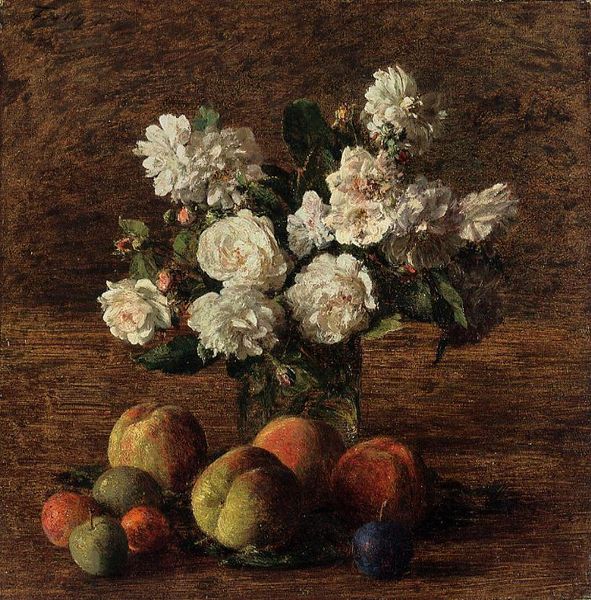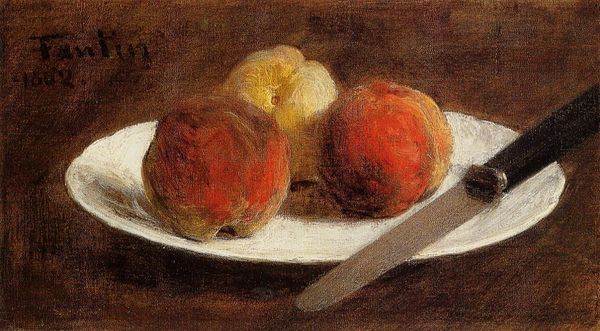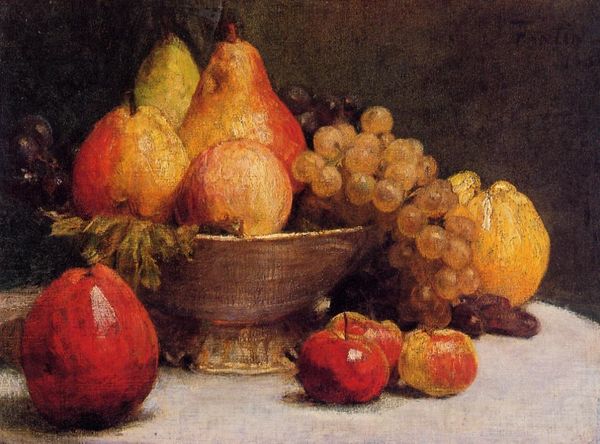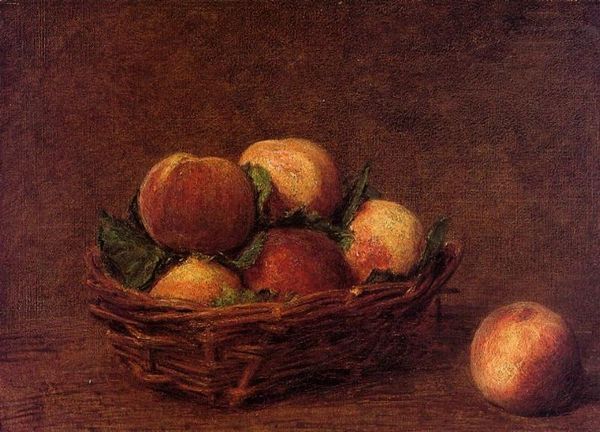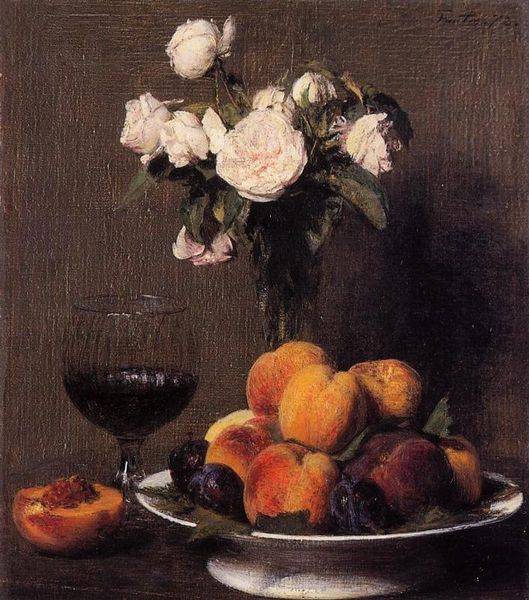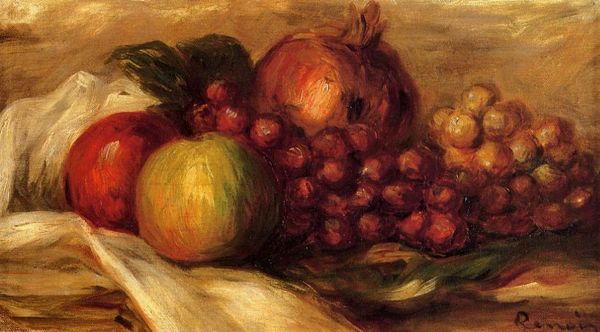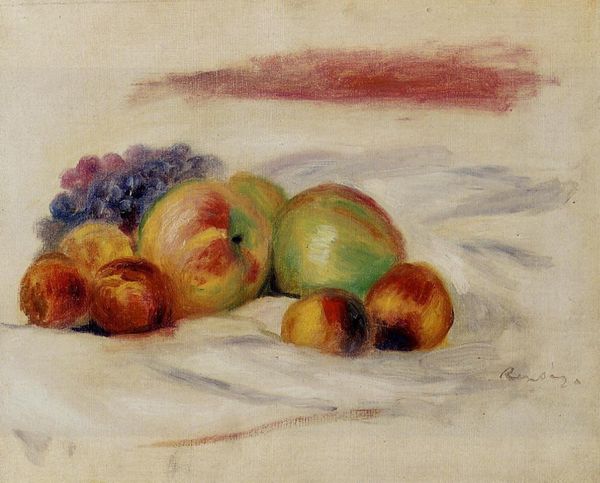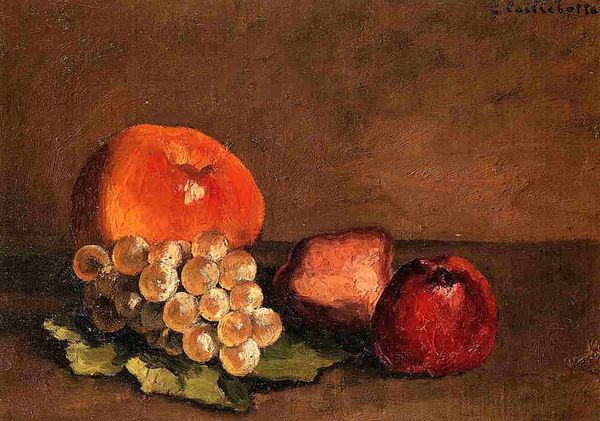
Copyright: Public domain
Curator: Well, here we have Pierre-Auguste Renoir's "Apples and Flowers," painted in 1896. It resides now in the Hermitage Museum, a delicious little slice of late Impressionism rendered in oil. Editor: Mmm, immediate impressions? Warm, almost…sepia-toned. Like a cherished photograph, faded with time. The apples, clustered like gossiping friends, seem almost edible. Curator: Exactly! The way Renoir manipulates light, bathing the scene in this gentle glow... It's as if the fruit and flowers are radiating their own inner warmth. Considering the backdrop of 19th-century Parisian life, steeped in rigid social norms, still life emerged as an increasingly valued form of art because its overt lack of purpose gave artists an excuse to simply… observe, commune. Editor: Observe and interpret, I think. There's a subtle dance between representation and abstraction, wouldn't you say? The brushstrokes are visible, energetic, preventing it from being mere mimicry. You get the sense he really felt the plumpness of those apples, the velvety petals of the roses. It is as though one feels it through the hand and not simply through the eye. Curator: Precisely! This intuitive engagement is key to understanding Renoir's artistic philosophy. He wasn’t interested in photographic realism, he strived for sensations, those fleeting, personal impressions. And in this era, art served increasingly as both a barometer of culture and a personal sanctuary for artists grappling with seismic societal changes. Editor: Absolutely. And I keep returning to the tonality of the piece. This isn’t just a visual rendering; it’s an evocation of scent and taste and maybe even memory? Curator: Well said. Even without directly depicting figures, there's this strong sense of presence. A celebration of simple pleasures, art becoming intimately connected with daily life in its many shapes. Editor: Leaving us with a quiet reminder, that even the most humble subjects, a bowl of apples, a bouquet of flowers, can become transcendent when viewed through the eyes—and, really, the heart—of a master. Curator: A beautiful thought to ponder as we move onto the next work. Perhaps there's more depth and power in still lives that most casual viewers ever notice.
Comments
No comments
Be the first to comment and join the conversation on the ultimate creative platform.
